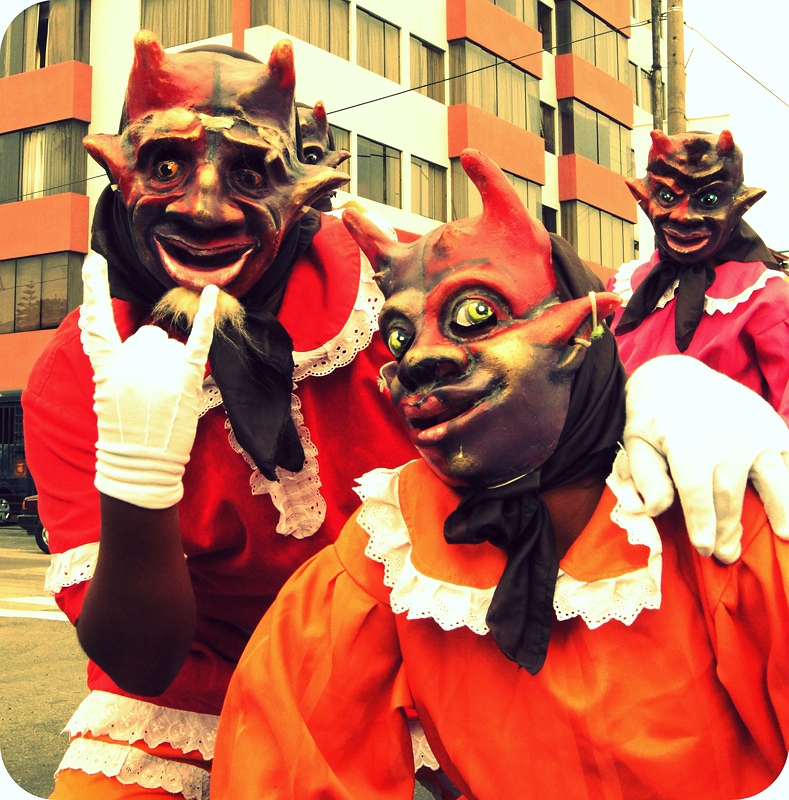The Son de
los Diablos (Rhythm of the Devils) is an Afro-Peruvian dance involving a
mixture of African, Spanish, and Indigenous rhythms was banned from religious celebrations by
the Catholic Church in 1817 because of its heavy African, and supposedly, devilish influence.
Jawbones of donkeys, horses, and mules were
used for rhythms of Afro-Peruvian music.
used for rhythms of Afro-Peruvian music.
After the
independence of Peru in 1821, the black folks lived in alleys near
churches and plazas of Lima, the nation's capital, where festivities were held. Before the
celebrations, blacks joined the festivities by forming gangs that danced the
Son de los Diablos. Nonetheless, the dance remained an important part of
carnival celebrations in Lima up until the early 20th century. The dance again
was revived in the 1950s.
The Cajita (little box), an Afro-Peruvian percussion instrument
A distinguishing factor of the Son de los Diablos is its usage of such instruments as the Cajita, a small wooden box that opens and closes creating a distinctive sound, and the Quijada, the jawbone of a horse, donkey, or mule, that when hit creates a raspy buzz. Like other parts of the Americas that underwent a slave trade, the African drum was forbidden and the slaves had to get creative with their feet, and other makeshift instruments to continue their African rhythms.
Son de los Diablos performance by Perú Negro



No comments:
Post a Comment
Anonymous comments will be ignored and deleted.